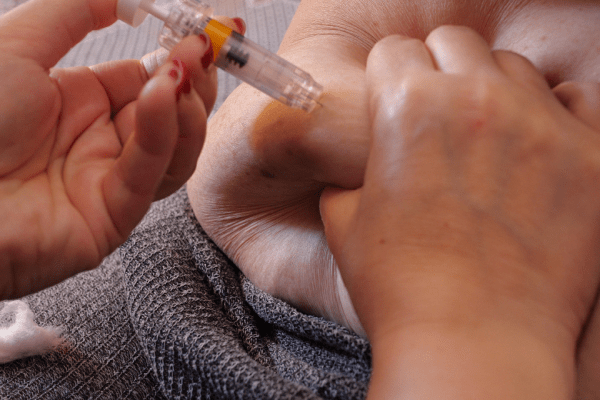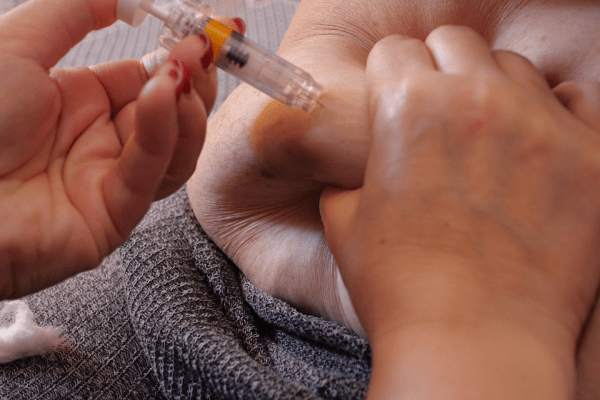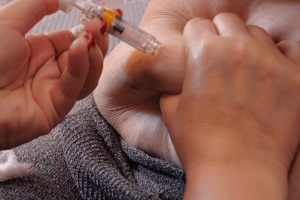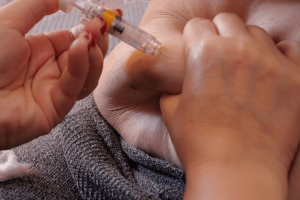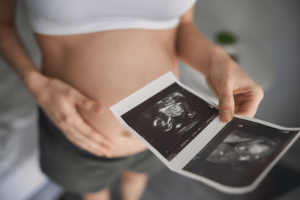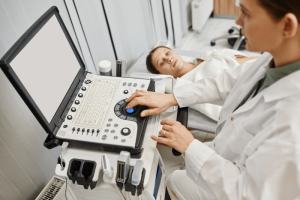Is IVF Gender Selection Possible in Cyprus ?
What is IVF?
IVF is couples’ favourite treatment because they don’t have babies naturally. IVF treatments receive eggs and sperm from the mother and father-to-be. These eggs and their sperm are also fertilized in the laboratory environment.
In this way, under the necessary conditions, the fertilized egg is released into the mother’s womb and the pregnancy process begins. For the pregnancy to be clarified, patients should do another test 2 weeks later and obtain the results.
What Is Sex Selection With IVF?
Gender selection is fairly easy with IVF treatments. The process follows these steps. The resulting embryo remains in the laboratory for a period of time. Then, the doctor examines the types of embryos, because several embryos will be fertilised. The preferred gender of the mother and father-to-be is placed in the mother’s womb and pregnancy begins. In this way, pregnancy is initiated with the desired genders before being placed in the mother’s womb.

Reasons For Gender Selection During IVF
There are several reasons why a couple or a person chooses gender. However, these parents often prefer to use gender selection for “family balance”.
Simply put, family balance means that if you’ve always wanted a girl but only have boys, the intended parents can choose gender during IVF to ensure you’re raising a baby girl.
In addition, targeted parents prefer sex selection if they are at risk for transmitting a genetically transmitted sex-based disease. In this scenario, gender selection provides potential parents with the opportunity to have a little boy or girl, depending on the type of disorder they can avoid during IVF.
Other events may include a couple who have lost a child and wish to have another of the same sex, or the intended parents may be more spiritually equipped to parent from one gender to the other.
There are profoundly personal reasons to want to choose a gender with the IVF, and we aim to respect your decision. If you are curious about gender selection and think it is a good option for your needs, we can discuss it as part of the consultation process.
Gender selection is an unbelievable service that science makes possible and can help future parents feel better prepared to raise their future children. However, this decision requires careful consideration as it carries a higher cost and can ultimately lead to regret if a parent chooses to later discover their child’s gender naturally.
Preimplantation Genetic Testing (PGT)
In fact, preimplantation genetic testing (PGD) is an advanced procedure used in IVF therapies to identify genetic abnormalities in hatched embryos. The goal of PGD is to enable your physician to select embryos for transfer that are presumed to be free of certain genetic conditions or chromosomal abnormalities.
This test allows patients to reduce the probability of a genetic illness in their child prior to pregnancy. But of course, you can determine your baby’s gender using the same test. Therefore, this test is also necessary for in vitro fertilization according to gender. After the patients’ preferred gender is determined by this test, this embryo is placed in the uterus.

How The Process Works
IVF gender selection works within a certain plan. The steps involved are as follows.
- Stage: First Examination and Evaluation of the Couple
Stage 2: Stimulation of the Ovaries (Ovulation Induction) - Stage: Collecting the Eggs
Stage 4: Ensuring Fertilization with Microinjection Method (ICSI) or Classic IVF Treatment - Stage: Embryo Transfer to the Expectant Mother
Stage 6: Pregnancy Test
Gender Selection Stages of IVF
It is important to understand what the whole process is at least at the basic level because you need to select the IVF, which is a very busy process to choose the right gender. In general, the IVF has 4 main steps:
- Ovarian Stimulation: The woman takes hormone-based drugs (as opposed to what is often done) to make many high-quality fully developed eggs.
- Egg Retrieval: Removes eggs from the ovaries.
- Embryology Laboratory: Fertilization of eggs, 3-7 days embryo development
- Embryo Transfer: Embryo transfer is the process of placing an embryo back into the womb of its intended parents.
Because sex selection requires additional embryonic testing (results take several days to arrive), it not only requires additional steps specific to testing embryos, but also requires two “treatment cycles”. One involves the production and analysis of embryos, the other a cycle of transfer of frozen embryos involving the preparation of the uterus for insertion and the FET itself.

Stage 1: Embryo Construction and Test Cycle
This part of the treatment is relatively similar to the freezing treatment of embryos, in which embryos are produced by IVF and frozen immediately thereafter. Of course, prior to freezing, a biopsy is performed and sent to a laboratory for testing.
Ovarian Stimulation:
In the same way as above, the woman takes hormonal medications to make a number of high quality mature eggs. These stimulants are typically in the 2nd-4th stage of a woman’s natural grain cycle. It starts on days and is taken for 10 days. The idea is that more eggs = more embryos = more embryos of the desired sex = an embryo of the desired sex is more likely to have a live birth.
Egg Collection:
Again, egg retrieval is the surgical process in which eggs are taken from the ovaries. It usually takes place an average of 12 days after initiation of stimulation drugs, but may vary depending on the response to the drugs and the subsequent follicular/egg development measured during ultrasound and blood work monitoring. Appointments. This is a relatively light process in terms of operations. It does not require any incision or stitches and does not use a general anesthetic (requires intubation and significant recovery time).
Instead, the patient is moderately sedated with MAC anesthesia, while an aspiration needle is guided from the vagina to the follicles in the ovaries under ultrasound guidance. After removal from the ovaries, test tubes containing follicular fluid and mature eggs are immediately taken to the embryology laboratory.

Embryology Laboratory:
The steps that occur in the embryology laboratory during gender selection can be divided into five main steps:
Isolation:
Once the eggs are in the lab, an embryologist will probe the follicular fluid and isolate all the eggs found. It will immediately be placed in nutrient media that mimics the fallopian tube environment.
Fertilization:
About four hours after collection, the embryos will be fertilized using ICSI or conventional insemination methods.
Embryo Development:
After fertilization, embryos will grow in the laboratory for 5-7 days. In a standard IVF cycle it is possible to transfer embryos after only 3 days (when in the cleavage stage of development), genetic testing can only be done on blastocyst embryos that usually develop on day 5 (which can only develop a little later).
Embryo Biopsy:
Once in the blastocyst phase, the embryo is made up of two different types of embryonic tissue. One cell group will be the fetus and another will be the placenta. The biopsy is done using a highly specialized and focused laser that removes a small number (usually 3-6 cells) from a group of cells that will develop into the placenta (called the trophectoderm). These cells are then labelled, treated and sent to a third-party genetics laboratory in an appropriate format for analysis.
Embryo Freezing:
Once the embryonic biopsy procedure is finished, the embryologists will vitrify (or freeze) the embryos, keeping them in almost the same condition as when they were fresh. Freezing embryos gives the necessary time to obtain the results of genetic tests and has practically no impact on the quality or the chances of success of the next transfer. In fact, there is evidence that frozen transfers result in higher rates for a large proportion of patients who have undergone IVF.
Genetic Test:
True genetic control is performed by a third-party genetic laboratory using a technique known as Preimplantation genetic Test for Aneuploidy (PGT-a), When performing chromosome analysis, cell sets for a specific embryo that analyzes the number and type of chromosome in each cell will be labeled XY or XX, and other key information about the number of chromosomes in each cell is included. With this information, the maternal and fertility clinic can now be prepared for the transfer of frozen embryos using the dissolved embryos of the desired gender.

Stage 2: Frozen Embryo Transfer Using an Embryo of the Desired Sex
Transferring frozen embryos is much simpler than the first step in the IVF cycle and has only two main steps:
Development of the Uterine Lining:
When transferring an IVF embryo, it is important to ensure that the uterus is optimally prepared for the embryo to implant into the endometrial lining. Although it is possible to make a natural FET loop without taking any medication, it is strongly recommended that, medically, she receives the estrogen and progesterone before and after the embryo transfer for a specific period of time.
Frozen Embryo Transfer:
For an embryo transfer using genetically controlled embryos for sex selection, one of the embryos determined to be the desired sex is removed from cryo tanks containing liquid nitrogen and thawed. Once unfrozen, the embryos will be loaded into a medically grade insertion catheter, passed through the vagina and cervix, and ejected into the uterus. The subject parent is now (until proven otherwise) pregnant with an embryo that will become a fetus and a child of his or her chosen sex.
What Country Works Best for IVF?
Success rates for IVF treatments are quite significant. Couples should choose countries of success and hospitals of success for treatment. Failing this, negative treatment outcomes are possible. However, IVF prices need to be affordable. Finally, receiving IVF gender selection treatment is not legal in every country. In this case, couples should choose profitable countries where sex selection for IVF is legal and successful IVF treatments are available. Because of this, gender selection of IVF in Cyprus will be a very good choice. Gender selection for IVF in Cyprus will allow you to receive treatments that are legally possible, economical and highly effective.
Cyprus IVF Gender Selection
The gender preference for IVF in Cyprus is very commonly preferred. It is legal to choose gender in IVF treatments in Cyprus. In countries where gender IVF preference is not legal, although some clinics may do this secretly, the prices will be quite high and you will not be able to claim your rights as a result of an unsuccessful treatment. This is why Cyprus is a great country for IVF. You can also get a price for Cyprus IVF Gender Selection Treatments, and get a treatment plan by contacting us.
Cyprus IVF Gender Selection Prices
Prices for IVF treatment in Cyprus vary considerably. Patients need to know that treatment costs also vary from clinic to clinic. As a result, patients must select a good clinic for treatment and make an important decision. Because the prices of IVF treatments in Cyprus are affordable and patients should not pay too much, believing they can get a better treatment.
That’s just going to cost you more. You may plan to receive treatment from a clinic with high success rates at affordable prices. Prices range from 3200 € on average. As we offer the treatment at the best guaranteed price, you can obtain detailed information by sending us an email.



